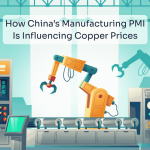An options premium is the price that an investor pays to buy an options contract or the amount received by the seller (or writer) of the options. In options trading, this premium reflects the current market price of the options and is one of the essential components in the process.
Futures and options trading rely heavily on understanding the options premium, which consists of two parts: intrinsic value and extrinsic value. Intrinsic value is the difference between the underlying asset's current price and the strike price if the options are in the money (ITM). Extrinsic value, also known as time value, accounts for factors such as the time remaining until expiration and the asset's volatility. Understanding these elements is vital when considering futures and options trading strategies, as they directly influence the premium's value.
The options premium fluctuates due to various factors, including market sentiment, time decay, and volatility, all of which can affect the options' overall cost. This blog will discuss the components of an options premium and offer a clear understanding of how it is calculated.
The options premium consists of two primary components: intrinsic value and extrinsic value.
For options that are out-of-the-money (OTM), the premium will consist solely of extrinsic value since there is no intrinsic value. That's why understanding the breakdown of the options premium is essential for traders in the futures and options trading market.
The calculation of options premium is determined by different factors. These variables feed into complex pricing models, which are often used to determine the theoretical price of options.
An options premium example can help clarify how these components work in real-world scenarios. Let's consider call options with a strike price of ₹1,000 while the underlying asset is currently trading at ₹1,100. The intrinsic value of options is ₹100.
Now, if the time to expiration is 30 days and the market volatility is high, the extrinsic value could be an additional ₹50. Hence, the total options premium would be ₹150 (₹100 intrinsic value + ₹50 extrinsic value). This total premium must be paid by the buyer to purchase the options.
Alternatively, if the options were out-of-the-money (for example, if the strike price were ₹1,200 while the asset is trading at ₹1,100), there would be no intrinsic value. The premium would solely consist of extrinsic value, which may be ₹30 based on market conditions. Hence, the premium would be ₹30. This breakdown is critical when considering online trading strategies.
There are several factors that influence the price of options, making it dynamic in nature. Key factors include:
Understanding options premium is crucial for traders in futures and options trading. It provides a clear picture of the costs involved in buying or selling options, which is critical when formulating trading strategies. The premium is affected by intrinsic value, extrinsic value, time to expiration, and market volatility. Mastering the concept of options premium calculation can significantly improve a trader's ability to manage risk and make informed decisions in online trading environments.

Market outlook 2026: Essential Do’s and Don’ts for Successful Investing
3 min Read Jan 2, 2026
China Manufacturing PMI at 50.1 Signals Stabilisation, Copper Prices Rally
3 min Read Dec 31, 2025
F&O Lot Size Changes in India: What Traders Need to Know (Effective Jan 2026)
3 min Read Dec 31, 2025
Revisiting the Gold-Silver Ratio Amid Silver's Outperformance
3 min Read Dec 22, 2025
Midcaps: Sweet Spot or Danger Zone? | What HSBC MF’s Cheenu Gupta Thinks | Ventura Spotlight
3 min Read Dec 17, 2025